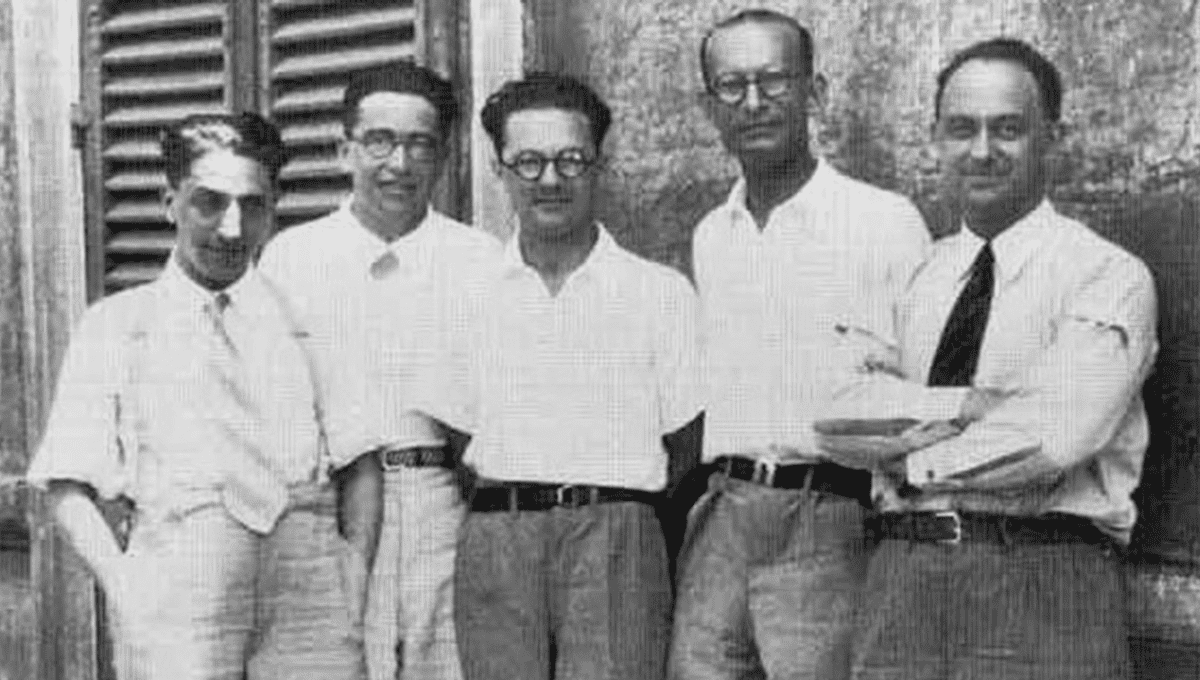
Most of science involves careful hypotheses, followed by rigorous experiments to test those hypotheses, after which something is learned. But sometimes it’s more about dipping your finger in suspicious substances you found around your lab and tasting it (hence saccharine) or accidentally splitting the atom and not realizing it for half a decade.
Enrico Fermi, who did the latter, was born in Italy in 1901 to an elementary teacher and a railroad official, and would go on to become known as the “architect of the atomic bomb”. Recognized by Adolfo Amidei – a friend of his father’s – to be a child prodigy at 13, Fermi was given all the help Amidei could muster in order to get him through an undergraduate degree.
Excelling at university, Fermi found a career in academia, becoming Professor of Theoretical Physics at the University of Rome while still in his mid-20s. It was here that he split the atom, and didn’t notice.
In March 1934, following the discovery of artificial radioactivity by Irène Curie and Frédéric Joliot, Fermi attempted to produce radioactivity by bombarding various elements using a radon-beryllium neutron source. If successful, it would mean creating artificial radioactivity could be achieved without the hassle of involving a particle accelerator.
“Some small cylinders, which consist of the element to be investigated, are being exposed to radiations coming from that source, for a time varying from some minutes to some hours,” Fermi explained of his experiment setup.
“Those cylinders are then rapidly placed around a wire counter. The counter has an outer wall consisting of a thin aluminium layer, about 0.2 millimeters [0.008 inches] thick, such that possible beta-rays may go through and enter the counter.”
“So far, the experiment has turned out well with two elements.”
In October, the team noticed erratic results while experimenting on silver. The levels of radioactivity measured after the experiment differed depending on where the metal was placed in its lead container. They experimented, placing materials in between the radon-beryllium neutron source and the silver.
Fermi suggested paraffin wax. When the results came in, they found that the radiation in the silver had increased by about a hundred times. Fermi theorized that the neutrons had been “slowed” by hydrogen atoms in the paraffin, meaning more collisions could take place when they collided with the silver. The discovery would pave way for the first nuclear chain reaction in 1942, which was achieved by slowing neutrons in the same way as Fermi.
In 1938 he was awarded a Nobel Prize for “his demonstrations of the existence of new radioactive elements produced by neutron irradiation, and for his related discovery of nuclear reactions brought about by slow neutrons.”
As impressive as this is, Fermi missed the fact that he had also become the first person to split the atom. In 1939, scientists from Germany performed the same experiments and found that neutron bombardment of uranium ends with two different products with a similar atomic weight. They concluded that five years earlier, Fermi had been creating uranium fission, where the nucleus of an atom splits into two or more smaller nuclei. He had split the atom.
As Fermi then realized, this had some world-changing implications. When a neutron collides with a uranium atom and splits it, more neutrons are released, which can then collide with other uranium atoms, repeating the process over and over again. As well as paving the way for nuclear power, this principle was used in nuclear bombs. Had he noticed this at the time, who knows how World War II would have played out, with the potential for nuclear weapons much closer on the horizon.
Source Link: Fermi First Split The Atom By Accident, And Nobody Realized For Five Years